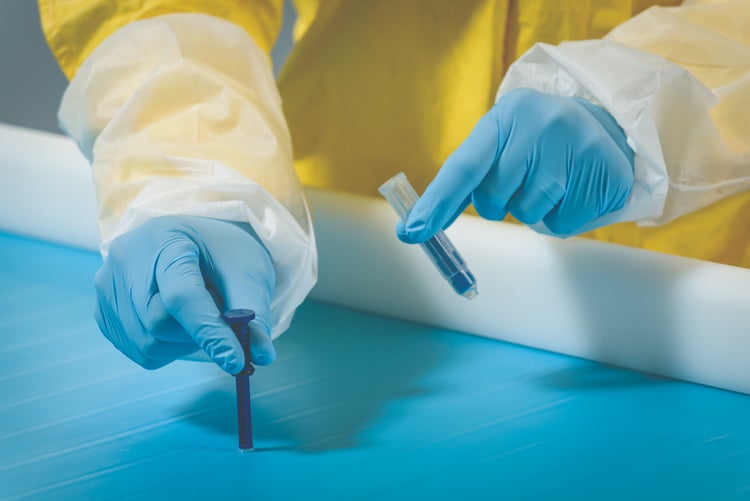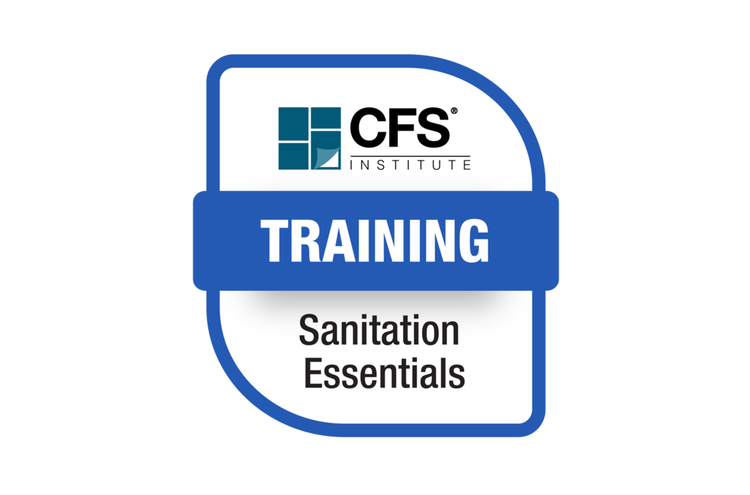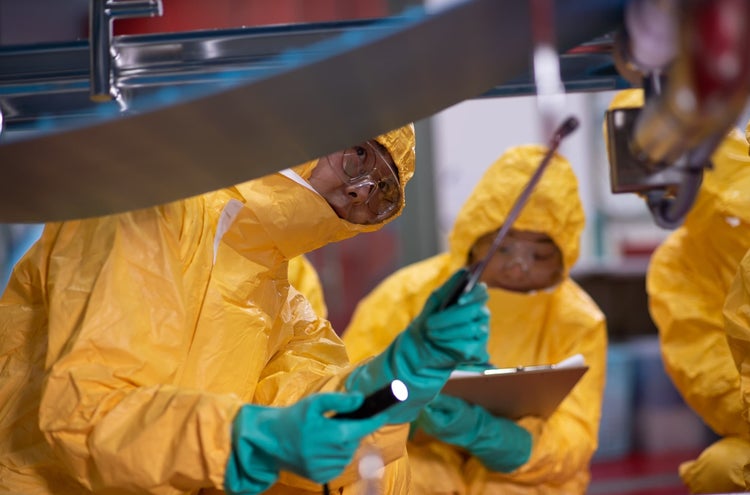Listeria (and more) on the agenda

One of the North American Meat Institute’s latest food safety events, the Advanced Listeria Monocytogenes Intervention & Control Workshop was held in late October. The most recent iteration of the regularly held event featured a new format that included boots-on-the ground food safety experts in addition to its usual trusted academic experts.
During the Meat Institute's early October Protein Pact 2023 Summit the association’s scientific affairs committee and food safety and inspection affairs committee convened and shared regulatory updates, scientific research and best practices with attendees of the event.
On Nov. 9, the Meat Institute hosted a webinar titled, “Mastering Product Innovation, Labeling Precision, and Recall Readiness,” and its regulatory services updates that cover food safety will continue to be held quarterly.
Subject matter experts
During the Listeria workshop Felix Dietz, food safety manager for Commercial Food Sanitation LLC, led a presentation titled, “Environmental Sampling, Investigation, Data Analysis And Process Control,” which was designed to set the stage for the event.
“It’s the introduction of environmental sampling, and how to investigate and think about data analysis around it, and process controls as they relate to pathogen environmental programs,” he said. “It allows participants to get a feel of the journey we’ve taken in continuous improvement.”
One of the things that is important is how we’ve come to learn how to eliminate single growth niches for Listeria, so we can produce new levels of control and food manufacturing.”
Dietz explained there have been a lot of Listeria-positive product challenges in the industry, and food companies convened in 2000 and started to lay the foundation for the future of what would become the Listeria Intervention and Control Workshop.
“One of the things that is important is how we’ve come to learn how to eliminate single growth niches for Listeria, so we can produce new levels of control and food manufacturing,” he said. “Then taking away more aggressive environmental monitoring sampling — we got a better understanding of how the organism spreads from growth niches and what kind of improvements we need to put in there with cross functional GMP and sanitation practices to control it and using better designs and zoning.”
Evolving approaches
During last month’s event, Matt Henderson, vice president of technical services for Lansing, Ill.-based Land O’Frost Inc., and a longtime participant at the Listeria Intervention and Control Workshop, led a presentation titled, “Process Management and Process Control Indicators.”
“This presentation builds on the basic environmental program design elements covered by presenters earlier in the course,” he said. “In my presentation, we cover program validation methods and frequency. We also discuss the characteristics of an aggressive program including the use of indicator sites, biasing sampling to Zone 4 as Zone 1-3 sites are proven to be under control, and the application of post rinse sampling.”
During the discussion, he covered some examples of the different levels of programs, from minimal to an advanced, aggressive program using a maturity model format.
“It is important for those managing Listeria environmental monitoring programs to understand that programs cannot remain static and be successful,” Henderson said. “Challenging the system with an annual validation process is important to ensure that the program adapts to a changing facility.” Finally, his discussion topic highlighted the creativity in program design that contributes to long-term success.
“Aggressive sampling does not simply mean sampling the same location more frequently,” he said. “It requires a deep understanding of the facility and process to best understand where to use the sampling resources in an aggressive manner.”
Monitoring matters
Providing attendees with more food safety insight from a processor’s standpoint was Matt Thomas, senior director, food safety and quality assurance, poultry division with Springdale, Ark.-based Tyson Foods Inc. Thomas covered two separate topics during the workshop.
"Listeria as a cause of foodborne illness has not, and is not, going away. Sharing these learnings and providing best practices and examples allow for a learning continuum that is important that we continue to pass on."
On the first day, his presentation, titled: “The process of Environmental Monitoring” reviewed the basics of a comprehensive environmental monitoring program involving ongoing data to support that Listeria is being controlled by the HACCP plan, SSOP, GMPs, and pre-requisite programs in a processing operation.
“Specifically, topics reviewed include everything from the basics of what swabbing supplies are needed (sponges, etc.) all the way to the complexities of how sites are chosen for monitoring,” Thomas said. “This discussion also provides strategic resources to encourage continuous improvement such as the Listeria Control Equation, maturity models for swabbing and root-cause analysis, and a review of an example processing cycle noting how the different parts of environmental monitoring fit into the parts of that cycle.”
Participants were also shown examples of swab sites in the various sanitary zones and how to effectively capture the data needed to make sound decisions from an environmental monitoring program.
On day two of the workshop, Thomas’ presentation was titled, “So You Got A Positive, Now What?”
“This module reviews strategies that can effectively employ the ‘seek-and-destroy’ method for finding the source of the swab positive and eradicate its root cause,” Thomas said. “The module specifically looks at the steps needed to perform a proper investigation, how to evangelize the results to the team in the facility, and how to use the Listeria Equation to review the different parts of the operation for opportunities leading to the swab positive result.” Additionally, an example “seek-and-destroy” scenario was reviewed in detail to give a good example of how effective and productive the approach can be.
“Listeria as a cause of foodborne illness has not, and is not, going away,” Thomas said. “Sharing these learnings and providing best practices and examples in the various workshop modules allow for a learning continuum that is important that we continue to pass on.”
Food safety journey
Steve Tsuyuki, senior director, sanitary design and corporate sanitation for Mississauga, Ontario-based Maple Leaf Foods, led several discussions at the workshop, beginning with a case study about the importance of vigilance. For that presentation, he shared details of Maple Leaf’s Listeria outbreak in 2008, and reminded attendees of the seriousness of the threat and that the threat still exists today.
His next presentation was titled: “Aggressive Sampling and Data Analysis,” which was an investigation on how to sample aggressively both on a routine basis and on “seek- and-destroy.”
“My content is about how you bring this notion of sampling aggressively on both the routine side and when you get a positive and go into ‘seek-and-destroy,’ looking at the approach people should take to get into the source of contamination and understand how the organism was transferred from the source to where they found it,” Tsuyuki said.
“I share the data and show them the transparency of how we’ve evolved since 2009,” Tsuyuki said. “This workshop is about processors teaching processors, and that’s a connection that’s really important.”



